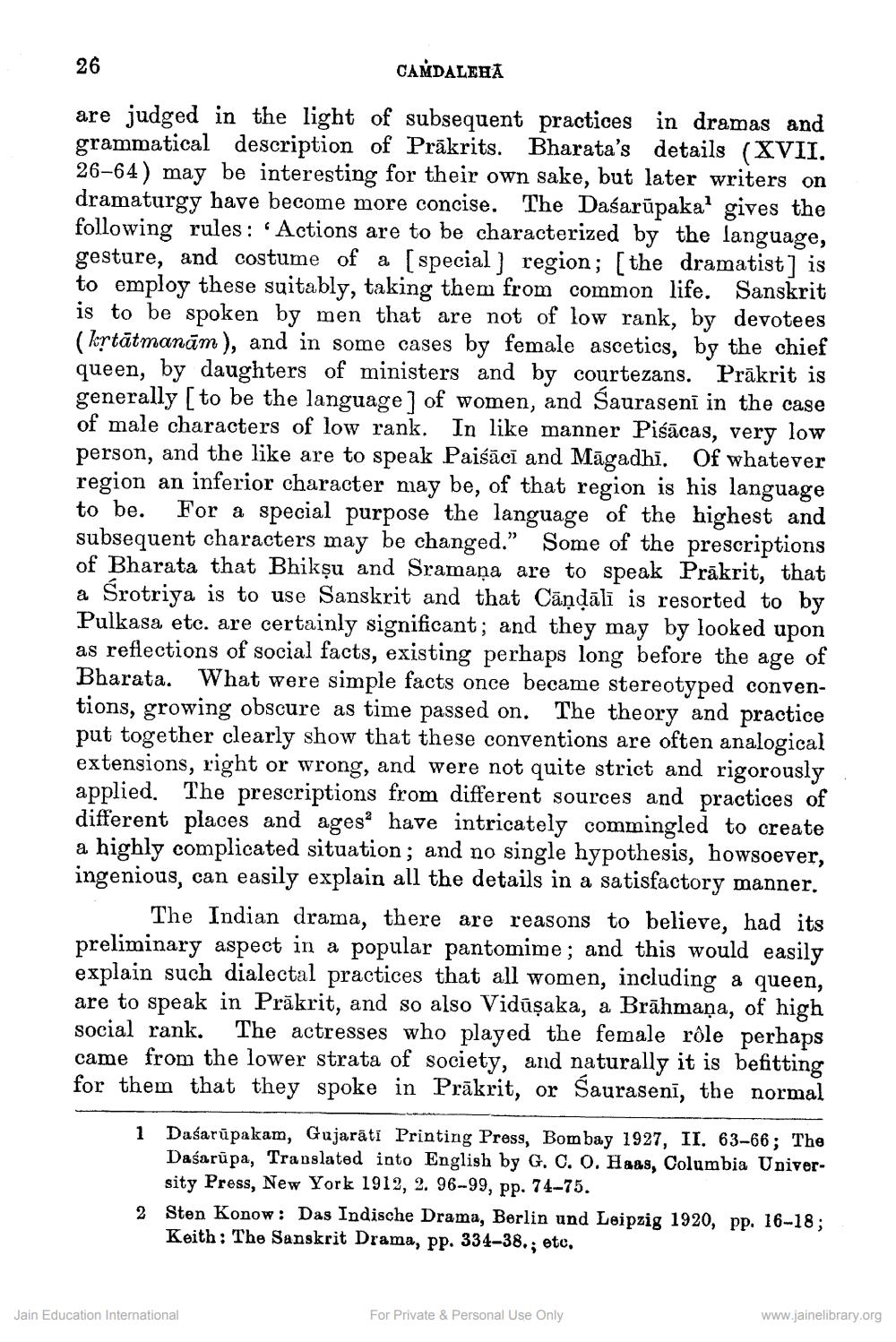________________
26
CANDALENA are judged in the light of subsequent practices in dramas and grammatical description of Prākrits. Bharata's details (XVII. 26-64) may be interesting for their own sake, but later writers on dramaturgy have become more concise. The Daśarūpaka? gives the following rules: 'Actions are to be characterized by the language, gesture, and costume of a [special] region; (the dramatist] is to employ these suitably, taking them from common life. Sanskrit is to be spoken by men that are not of low rank, by devotees (krtātmanām), and in some cases by female ascetics, by the chief queen, by daughters of ministers and by courtezans. Prākrit is generally [to be the language ] of women, and Saurasenī in the case of male characters of low rank. In like manner Piśācas, very low person, and the like are to speak Paiśācī and Māgadhi. Of whatever region an inferior character may be, of that region is his language to be. For a special purpose the language of the highest and subsequent characters may be changed.” Some of the prescriptions of Bharata that Bhikṣu and Sramaņa are to speak Prākrit, that a Śrotriya is to use Sanskrit and that Cāņdālī is resorted to by Pulkasa etc. are certainly significant; and they may by looked upon as reflections of social facts, existing perhaps long before the age of Bharata. What were simple facts once became stereotyped conventions, growing obscure as time passed on. The theory and practice put together clearly show that these conventions are often analogical extensions, right or wrong, and were not quite strict and rigorously applied. The prescriptions from different sources and practices of different places and ages have intricately commingled to create a highly complicated situation; and no single hypothesis, howsoever, ingenious, can easily explain all the details in a satisfactory manner.
The Indian drama, there are reasons to believe, had its preliminary aspect in a popular pantomime; and this would easily explain such dialectal practices that all women, including a queen, are to speak in Prākrit, and so also Vidūşaka, a Brāhmaṇa, of high social rank. The actresses who played the female rôle perhaps came from the lower strata of society, and naturally it is befitting for them that they spoke in Prākrit, or Saurasenī, the normal
1 Dasarūpakam, Gujarati Printing Press, Bombay 1927, II. 63-66; The
Dasarūpa, Translated into English by G. C. 0. Haas, Columbia Univer
sity Press, New York 1912, 2. 96-99, pp. 74-75. 2 Sten Konow: Das Indische Drama, Berlin und Leipzig 1920, pp. 16-18;.
Keith: The Sanskrit Drama, pp. 334-38.; etc,
Jain Education International
For Private & Personal Use Only
www.jainelibrary.org




